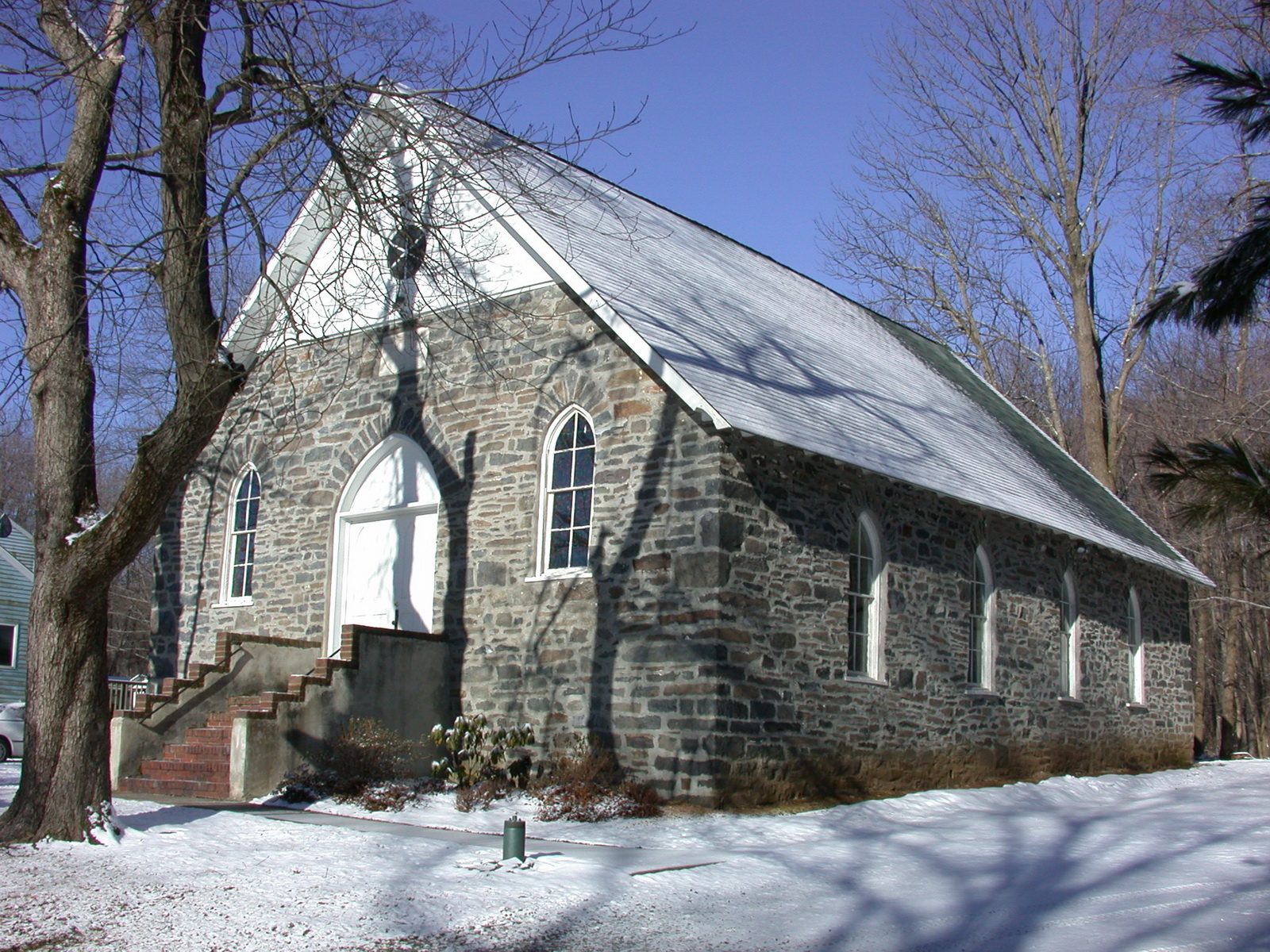A brief history of the Mt. Zion United Methodist Church
Early maps of the Sourland Mountains show that the area was uninhabited. The land supplied wood for fuel and the property was designated as “wood lots”. The wealthy absentee owners of these “wood lots” became less interested in their investments as the need for wood decreased.
The first residents of Zion are believed to have been the freed slaves of the minister of the Hopewell Baptist Church who willed, upon his death, the freedom of his two slaves. One of these men, after serving in the Revolutionary War, married a white woman and settled in Zion. The second newly freed slave also selected Zion for his new home. Thus, the earliest settlers in Zion found in the natural impasse of the Sourlands what they needed most to survive: a safe haven from a world in which they would have been deemed misfits, and the opportunity to use the virtually unclaimed land for shelter, food and fuel.
Gradually, the population of Zion increased; however, the tiny town tended to attract people who, for one reason or another, sought the shelter of the Sourlands from mainstream America.
In the early 1800’s the white clay found in the Sourlands provided industry to the area and the population increased. Clay pottery and clay drainage tiles were produced for use throughout Somerset and. Hunterdon Counties.
Methodist circuit riders appeared in 1834. Prior to this, the surrounding churches, primarily Dutch Reformed, had not reached the neglected and destitute area of the Sourlands. The Methodist movement had a tremendous impact on the small population. The circuit riders offered religion in an appealing format. First, the circuit riders came directly to the people. Second, the message of Hope boosted the spirits of people who otherwise had little hope. Third, the message was in English, a strong contrast to the staid, Dutch-speaking services of the Reformed Churches. Fourth, John Wesley was a staunch supporter of the British Crown, strongly allying himself with the workingman. The Methodist service and hierarchy provided an Americanized version of the Anglican Church.
In the mid 1800’s, several saw mills, a blacksmith shop, and store appear on local maps. The town became known as Rock Mill.
In 1843, Henry Conover owned a 350 acre peach farm behind the Mt. Zion church in an area known as Peach Hill. Mr. Conover was the great-grandfather of Bob May (whose father built and became the first pastor of the Neshanic United Methodist Church). Mr. Henry Conover was also the great-grandfather of Henry Conover, a lifelong member of Mt. Zion.
The new Mt. Zion church was dedicated on January 31, 1844 with the cornerstone being laid by Rev. Daniel Parrish, Presiding Elder. This was the first church of a denomination other than Dutch Reformed or Presbyterian built in the area. By 1869, seven other Churches of four denominations were located within a five-mile radius of Mt. Zion. In approximately 1866, an African-Methodist Episcopal Church was built in Zion. Both of these churches are a true tribute to the improvement in the way of life that the Methodist Church brought to these people.
The little wood church, built from Mr. Conover’s wood, burned and was replaced by the current stone structure in 1880. The Mt. Zion church has periodically suffered difficult times. From 1907-1916 it was closed. From 1916-1922, the pastors of Hopewell and Centerville churches served at Mt. Zion. Services for the next ten years were held infrequently.
The pastor of the Centerville church, Dominie Pace, (note that the Pastor was not referred to as “Pastor” or “Reverend”, but as “Dominie”) was assigned solely to the Centerville church. Dominie Pace felt so strongly that the small population on the mountain should have access to its church, that on his own, he opened the Mt. Zion church each week for Wednesday night prayer meetings.
In June 1935, the church officially became part of the Neshanic Circuit. This circuit included Mt. Zion, Centerville, and Neshanic. This three-point circuit was the responsibility of one pastor. The Centerville church has since closed, but the Mt. Zion and Neshanic churches and congregations still exist today.
On March 2, 1975, the church suffered an extensive fire, leading to $20,000 in damage. The congregation, consisting of only nine members, succeeded in reconstructing and restoring the church to its original condition despite the overwhelming financial burden. In large portion, the success of the renovation should be attributed to Eva Kyle, who worked tirelessly gathering the necessary labor, supplies, and monies.
The church and the little village of Zion, or Rock Mill, are somewhat clouded by mystery. Six generations ago, the people of Zion, about whom we know very little, chose to erect this little church. The structure, like the very people who built it, is awe-inspiring in its simplicity.
The Mt. Zion church embodies a deep sense of peace and the feeling that the church and the woods in which it is nestled are truly one. Please take the time to come visit us “on the mountain”.

